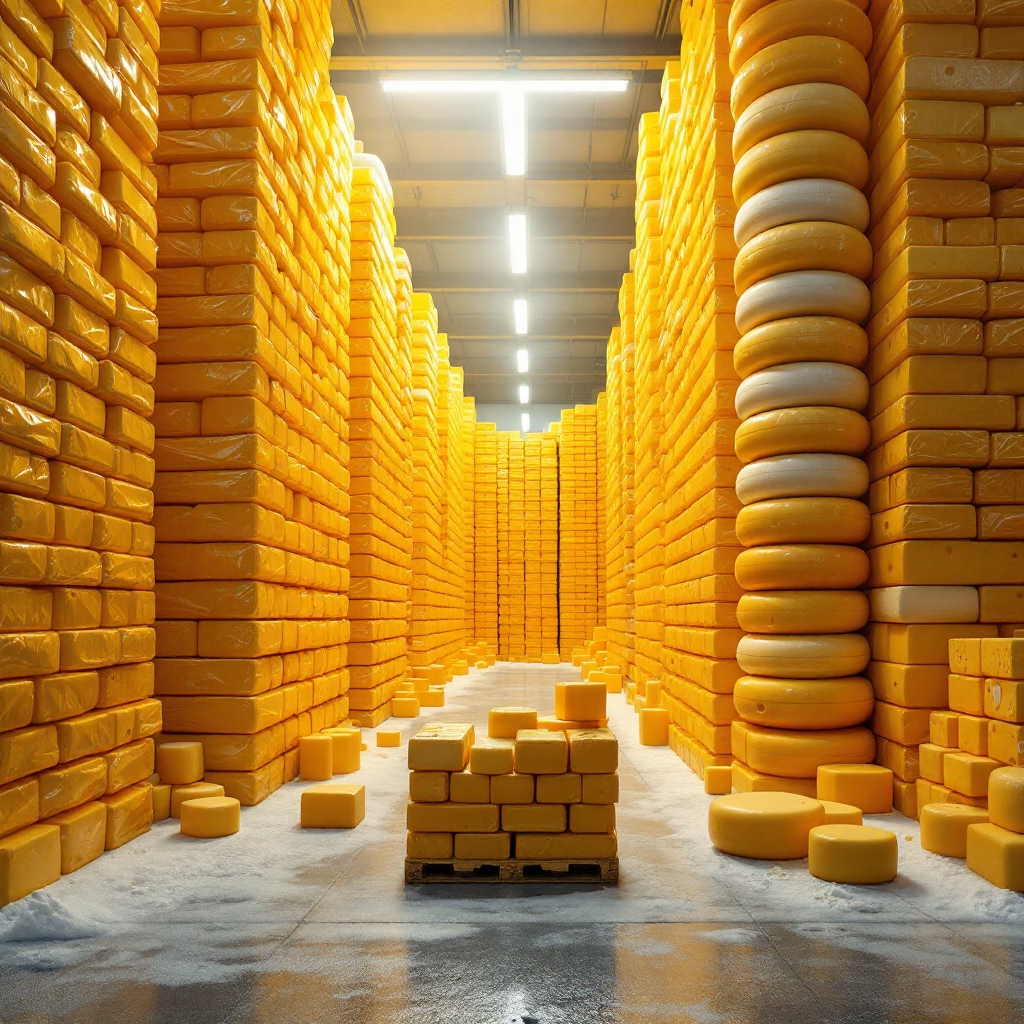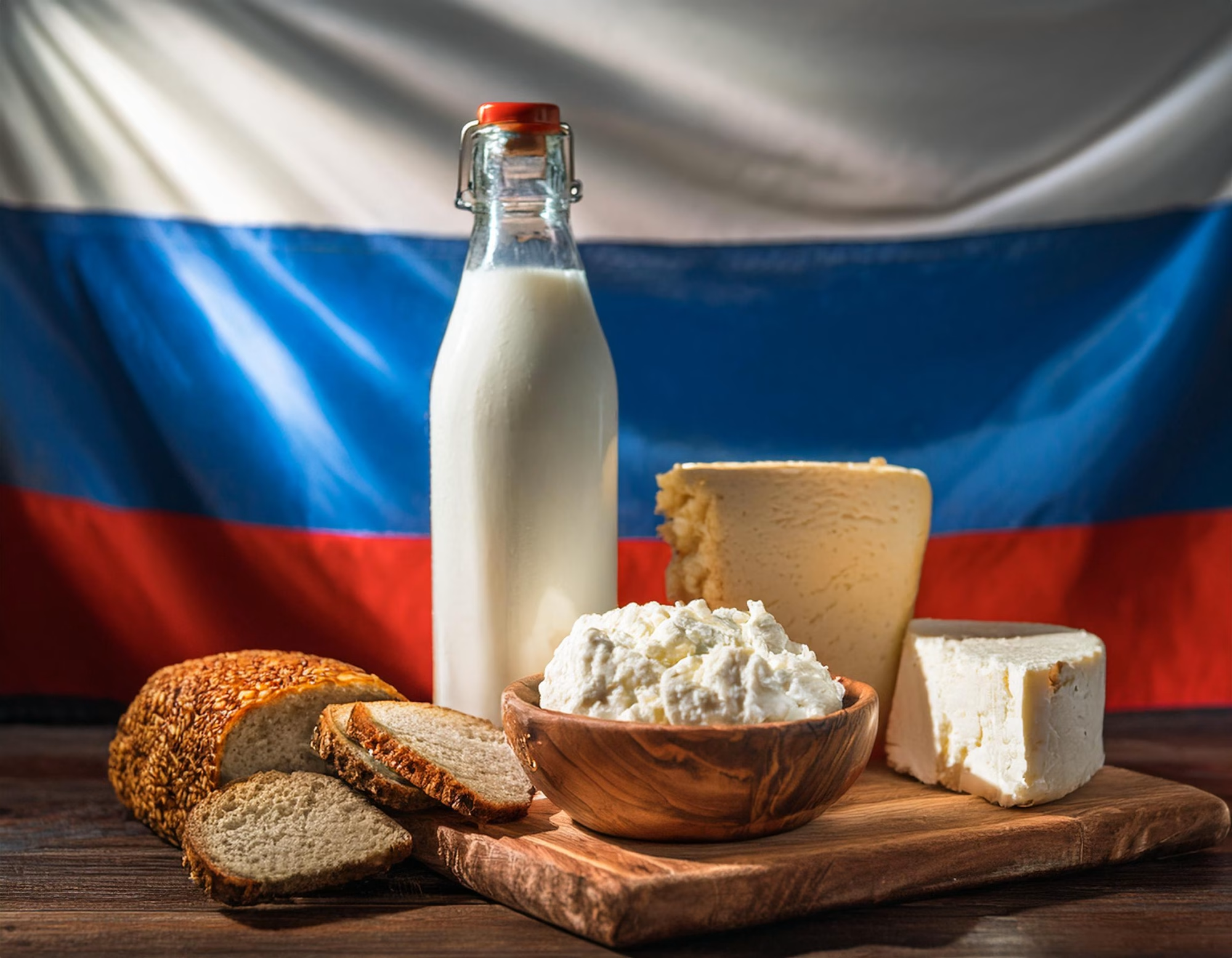Butter mountains and cheese canyons: America’s dairy landscape is shifting faster than milk in a churning vat. With butter stocks hitting a 3-year high and cheese defying gravity, farmers are milking every efficiency drop. But as imports flood in and avian flu looms, is the industry cream of the crop or about to curdle?

Executive Summary
The USDA’s January 2025Cold Storage Report reveals a divided dairy landscape: butter stocks surged to 270.3 million pounds (up 26% month-over-month), the highest January inventory since 2021, while cheese inventories narrowed their annual deficit to 5.7%—the smallest gap since May 2024. Key drivers include record-high butterfat yields, collapsing cream prices, and shifting consumer preferences toward imported butter. Meanwhile, cheese production rebounded via Italian varieties and exports, though looming capacity expansions and trade wars threaten stability. Below, we dissect the data, policy shifts, and market forces reshaping America’s dairy sector.
Butter Stocks: A Perfect Storm of Fat, Feed, and Foreign Competition
Cream Multiples Collapse to Decade Lows
Butter inventories swelled despite stagnant milk production (+0.1% YoY), as butterfat content hit 4.43%—up 11 basis points from 2024. This “fat revolution” added 21.75M extra pounds of butterfat annually, equivalent to 1.2B additional pounds of milk. With cream multiples (cream/butterfat price ratios) plunging to 1.10–1.25x—the lowest since 2015—churns operated at 92% capacity, producing 180M lbs of butter monthly.
Imports Capture 23% of the Retail Market.
Domestic butter demand grew 1.8% in 2024, but EU and NZ imports surged 14%, capturing nearly a quarter of U.S. retail sales. Consumers favor sustainability-labeled imports, while U.S. brands lag in marketing. “We’re making butter Americans don’t want to buy,” Wisconsin churn operator Mark Tolbert admits.
H5N1 Adds Uncertainty
California’s milk production fell 5.7% YoY due to H5N1 avian flu outbreaks, with 38 human cases linked to raw milk consumption. Retail butter prices rose 7.7% YoY as biosecurity costs mounted, though federal pricing mechanisms stabilized farmgate milk at .75/cwt.
Cheese: Italian Varieties Offset American Decline
| Cheese Type | Jan 2025 Stock | YoY Change | MoM Change |
| American-Style | 777.6M lbs | -7.4% | +0.8% |
| Italian Varieties | 572.9M lbs | -3.7% | +2.4% |
Source: USDA Cold Storage Report
- Mozzarella Madness: Italian cheese output hit 6B lbs in 2024 (+2.4% YoY), driven by pizza demand and new Wisconsin plants.
- Cheddar Collapse: American-style production fell to 3.85B lbs (-6.1%), its lowest since 2020, as processors prioritized higher-margin exports.
- Export Lifeline: Cheese exports absorbed 14% of production, though EU tariffs threaten to erase gains.
Input Costs Squeeze Margins
Feed vs. Labor: A Tug-of-War
- Feed Costs: Fell 10.1% YoY to $62.4B in 2025, with corn at $4.17/bushel and soybeans at $11.96/cwt.
- Labor Costs: Rose 3.6% to $53.5B—a record high—as H-2A visa shortages persist.
- Dairy Margin Coverage (DMC): Payments fell 12% to $8.9M, signaling improved operational margins.
Component Optimization Pays
Farms averaging >3.5% milk protein earned $0.45/cwt extra in 2024, while butterfat premiums hit $2.40/lb. However, feed efficiency gains mask rising debt: the average dairy farm now carries .2M in liabilities.
Policy Shocks: Federal Order Overhaul
June 2025 Formula Changes
USDA’s amended Federal Milk Marketing Orders will:
- Update skim milk composition factors (+0.1% protein weight).
- Exclude barrel cheddar from Class III pricing.
- Implement new make allowances ($0.0015/lb marketing cost added).
Impact: Class III milk prices are forecast to drop $0.90/cwt to $19.70, squeezing small herds.
Trade Wars Escalate
- Canada: Accused of dumping 250M lbs of subsidized skim milk powder globally.
- EU: Threatens 28% tariffs on U.S. cheese if steel disputes intensify.
Farmer Strategies: Survival in a Volatile Market
- Component Testing: Herds optimizing for >4.4% butterfat and 3.6% protein capture premium contracts.
- Whey Diversification: Permeate partnerships save $45/ton vs. soybean meal.
- Manure-to-Energy: Methane digesters cut emissions by 40% while generating revenue by $25K/year.
- Futures Hedging: 62% of large farms now hedge against milk price swings.
Consumer Impact: Aisle Shock and Alternatives
- Retail Prices: Eggs jumped 36% YoY (Harlem, NY: $12/dozen), while milk hit $7.77/gal in premium markets.
- Plant-Based Shift: Soy milk sales rose 18% as cost parity nears—$5.57/4L vs. dairy’s $5.74.
2025 Outlook: Cautious Expansion Amid Risks
| Metric | 2025 Forecast | Change from 2024 |
| All-Milk Price | $22.75/cwt | +$0.50 |
| Milk Production | 227.2B lbs | -0.8B lbs |
| Cheese Exports | 11.9B lbs | +0.2B lbs |
| H5N1 Outbreaks | 12 states | +300% YoY |
Sources: USDA
Critical Risks:
- Avian Flu: H5N1 detected in 12 states, threatening 5% of milking herds.
- Capacity Glut: $4B in new cheese plants (1.2B lbs/year) may invert prices by Q3.
- Regulatory Overhaul: Proposed Dietary Guidelines demote dairy, prioritizing legumes.
Conclusion: Navigating the Dairy Tightrope
The U.S. dairy sector faces a precarious balance: record component yields clash with saturated demand, labor shortages, and global oversupply. While 2025’s $22.75/cwt all-milk price and falling feed costs offer respite, H5N1, trade wars, and plant-based competition loom large. Success hinges on agility—farmers maximizing protein premiums, processors pivoting to exports, and policymakers stabilizing safety nets. As one Wisconsin farmer summarized: “We’re not just milking cows anymore; we’re milking data.”
 Join the Revolution!
Join the Revolution!
Bullvine Daily is your essential e-zine for staying ahead in the dairy industry. With over 30,000 subscribers, we bring you the week’s top news, helping you manage tasks efficiently. Stay informed about milk production, tech adoption, and more, so you can concentrate on your dairy operations.







 Join the Revolution!
Join the Revolution!




